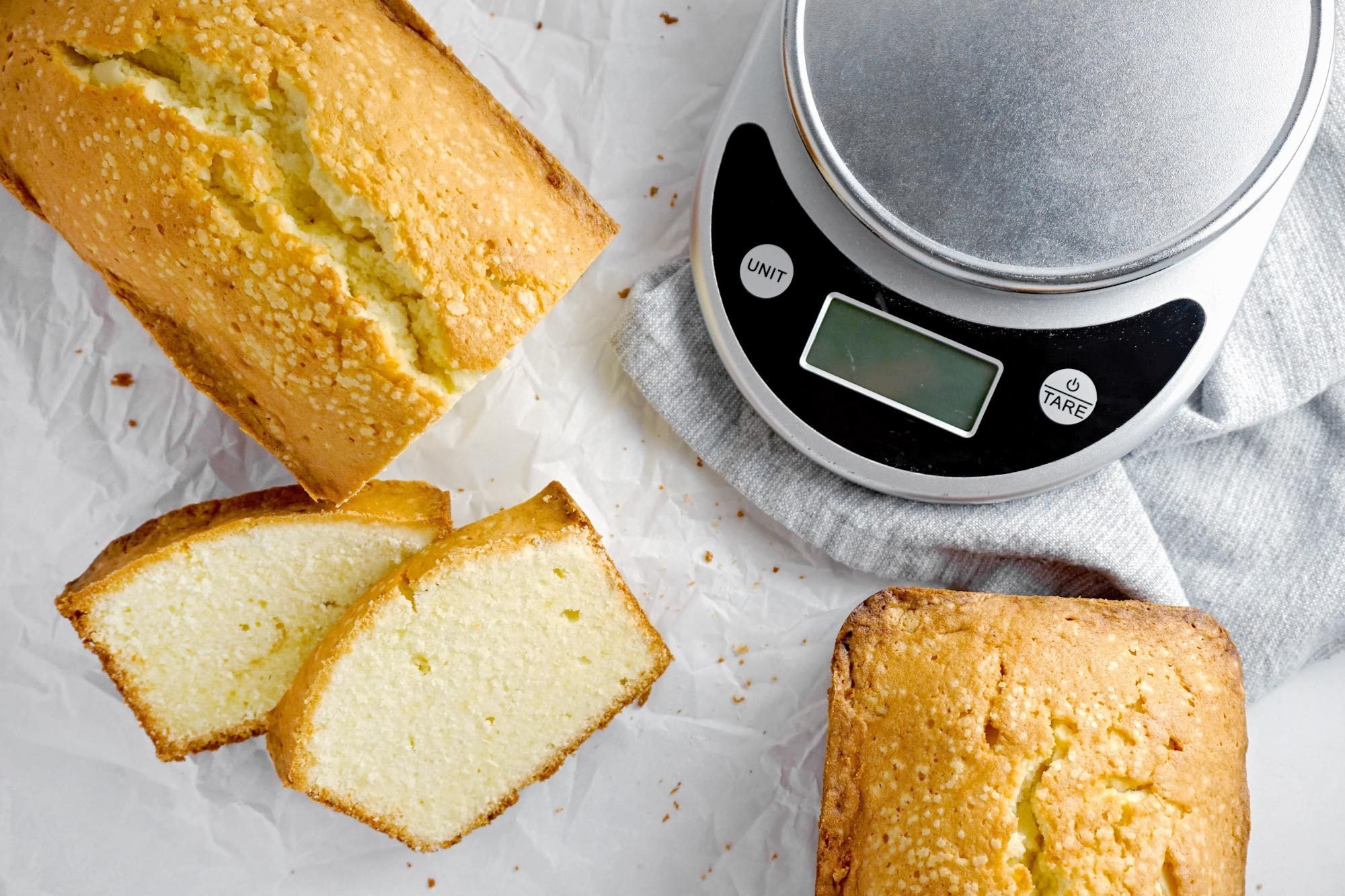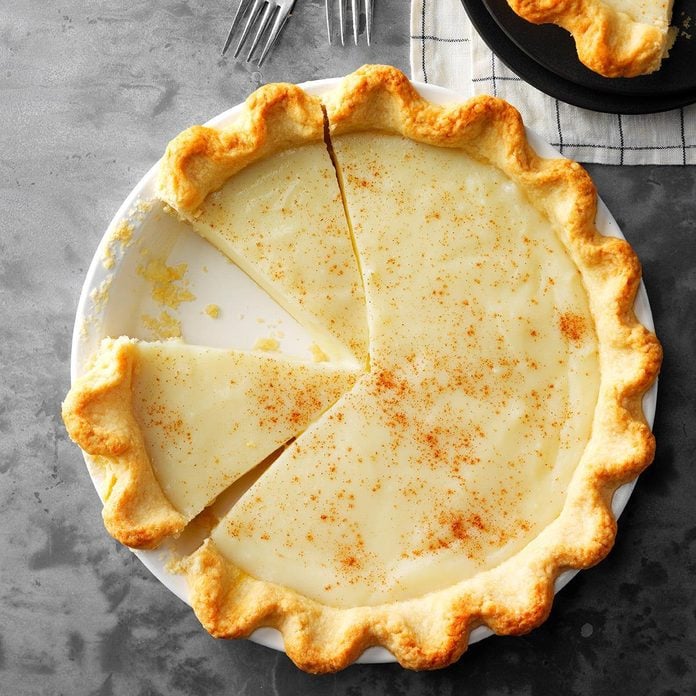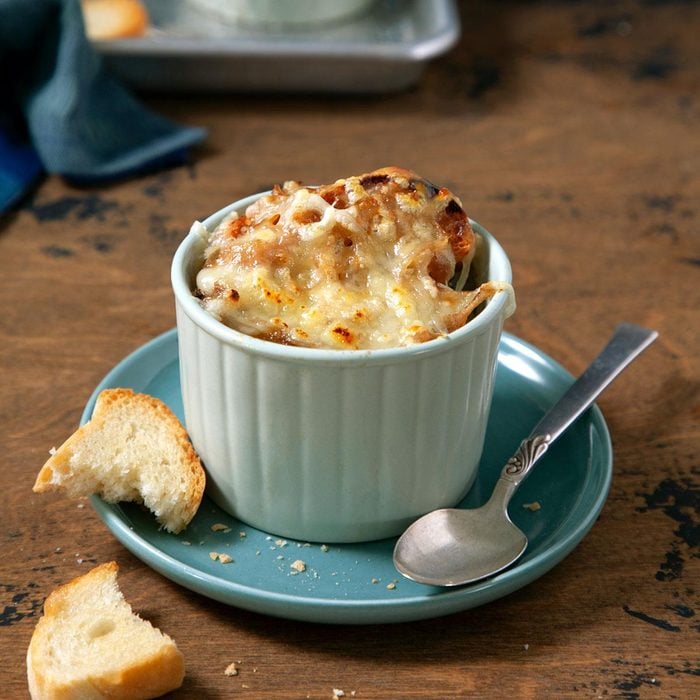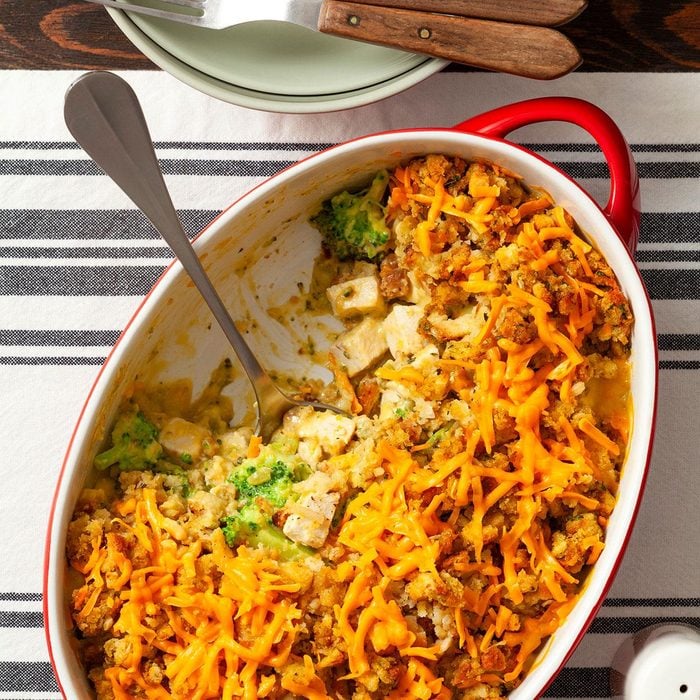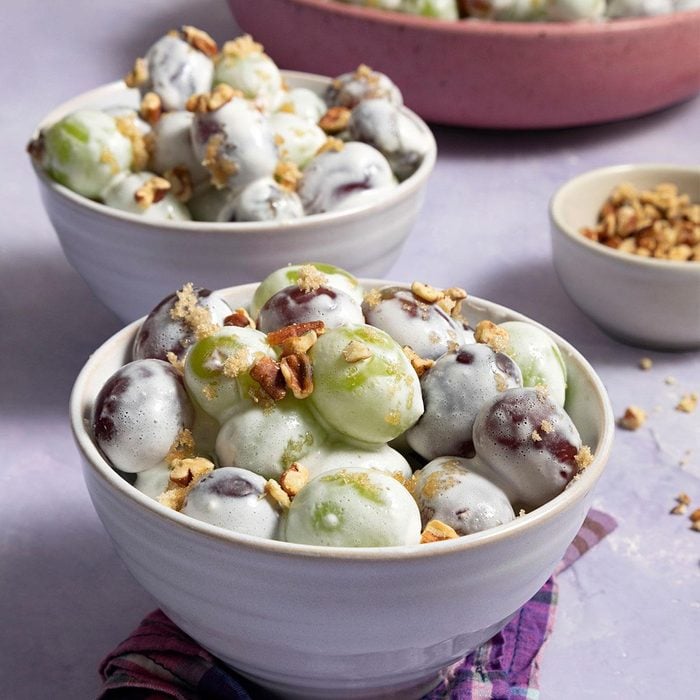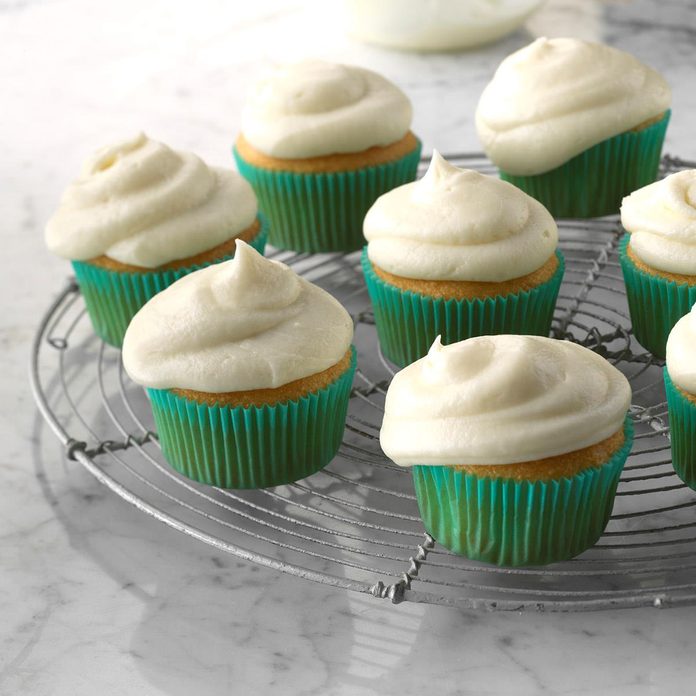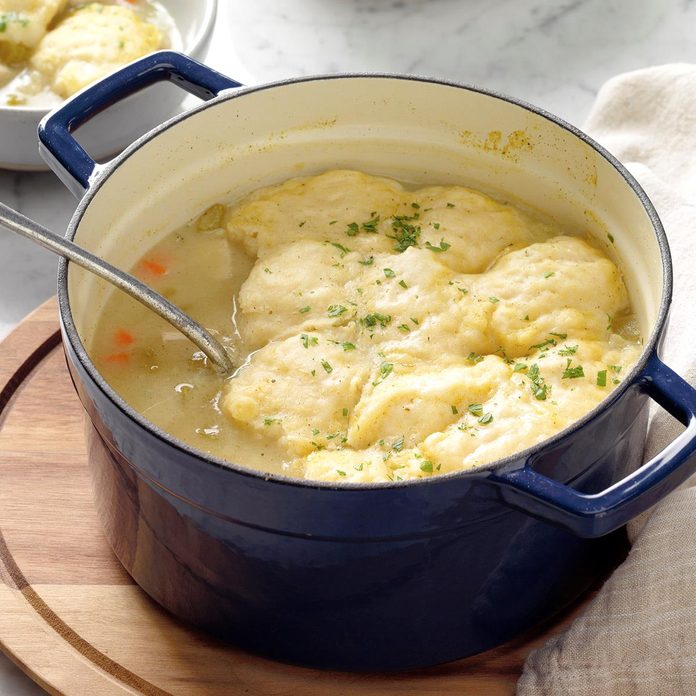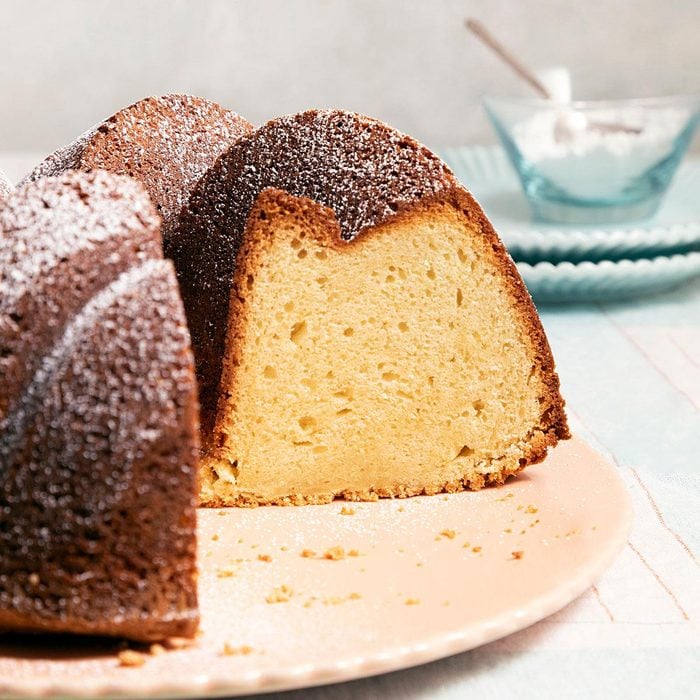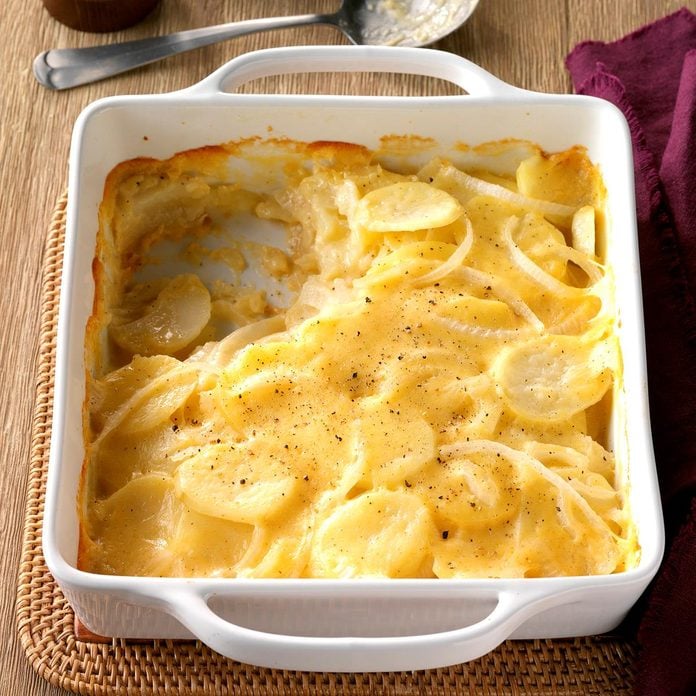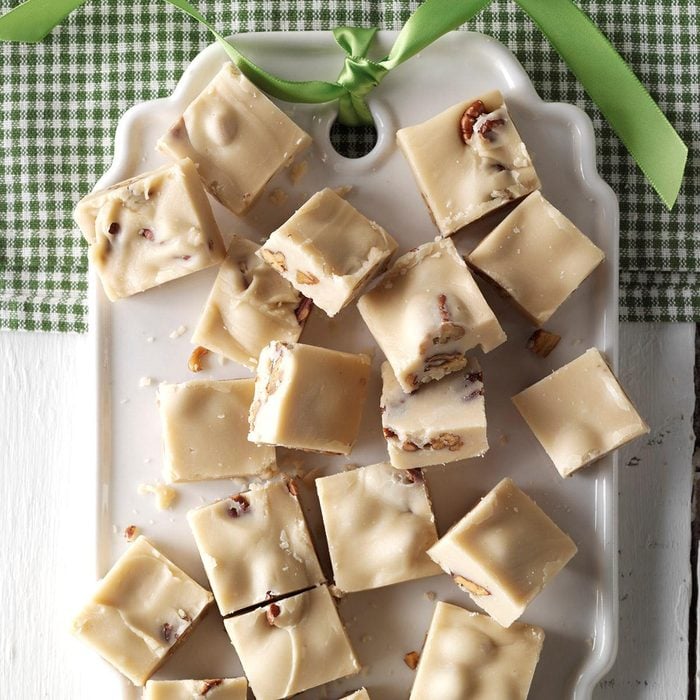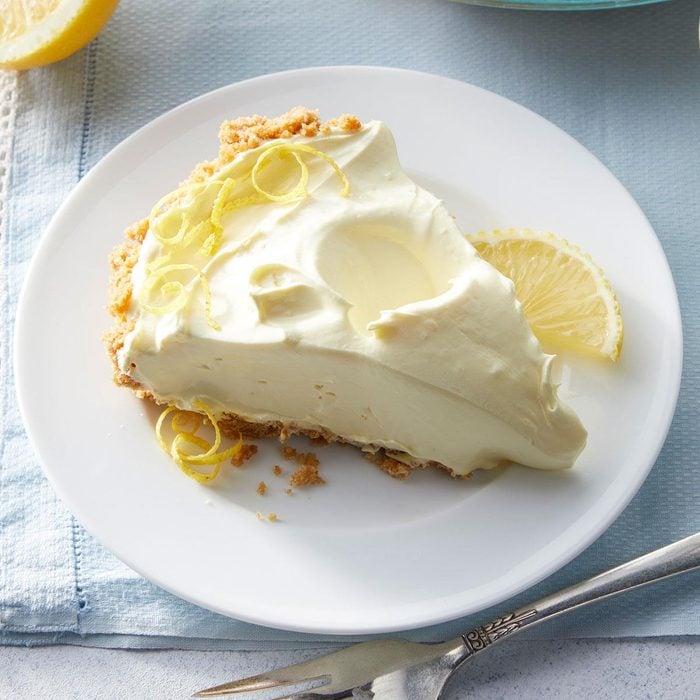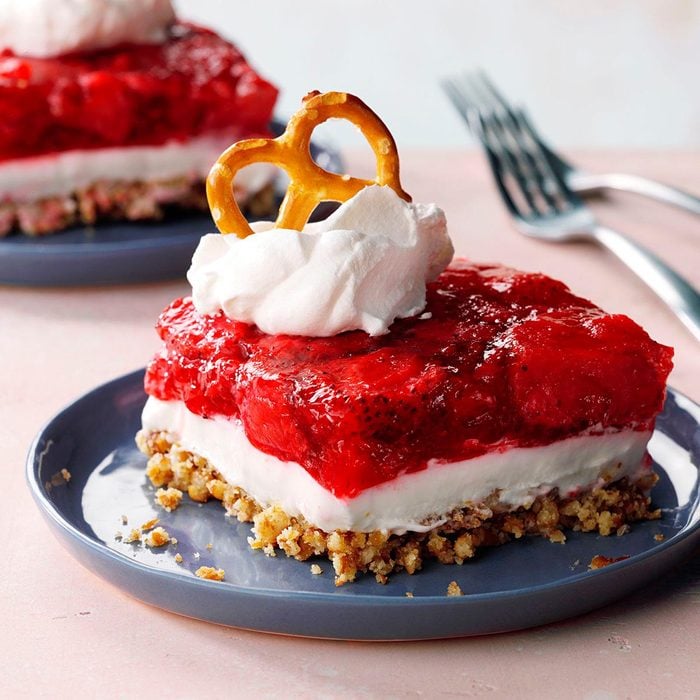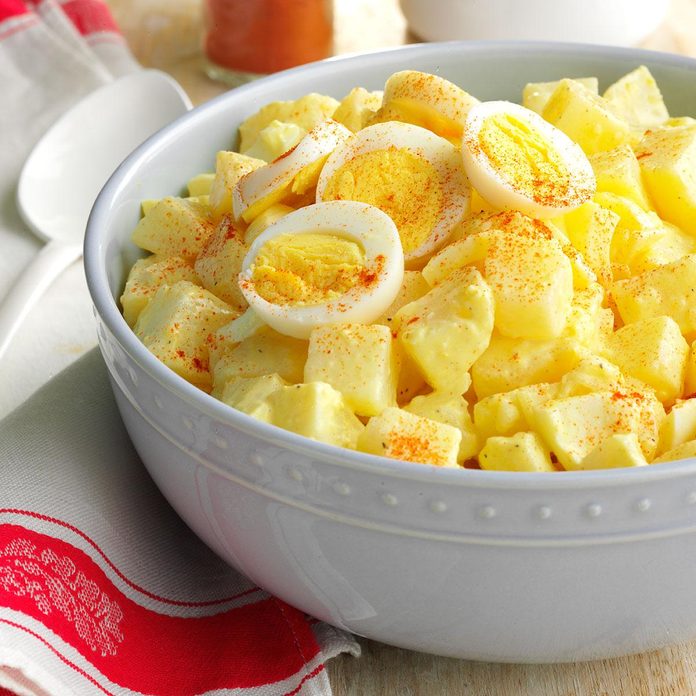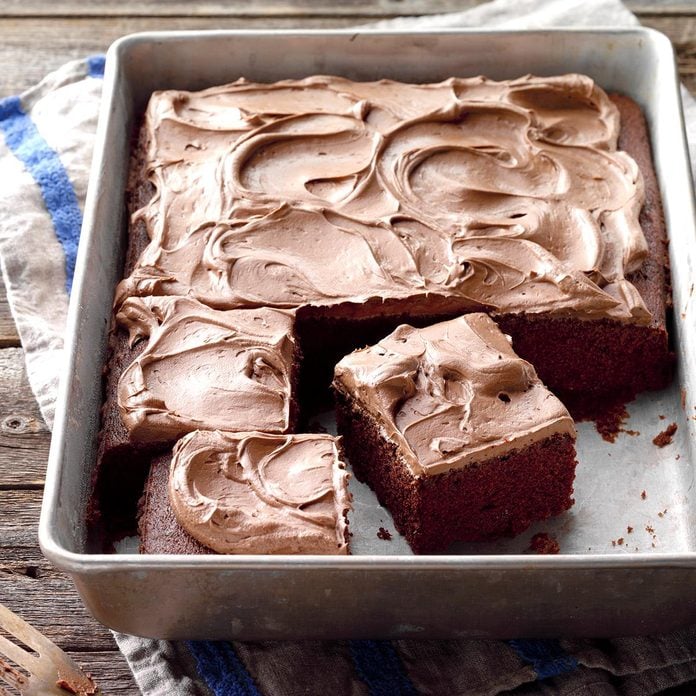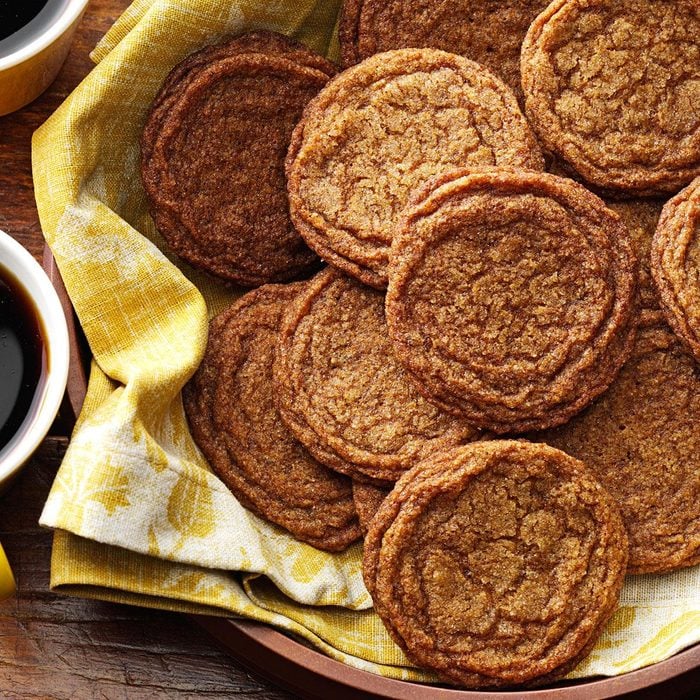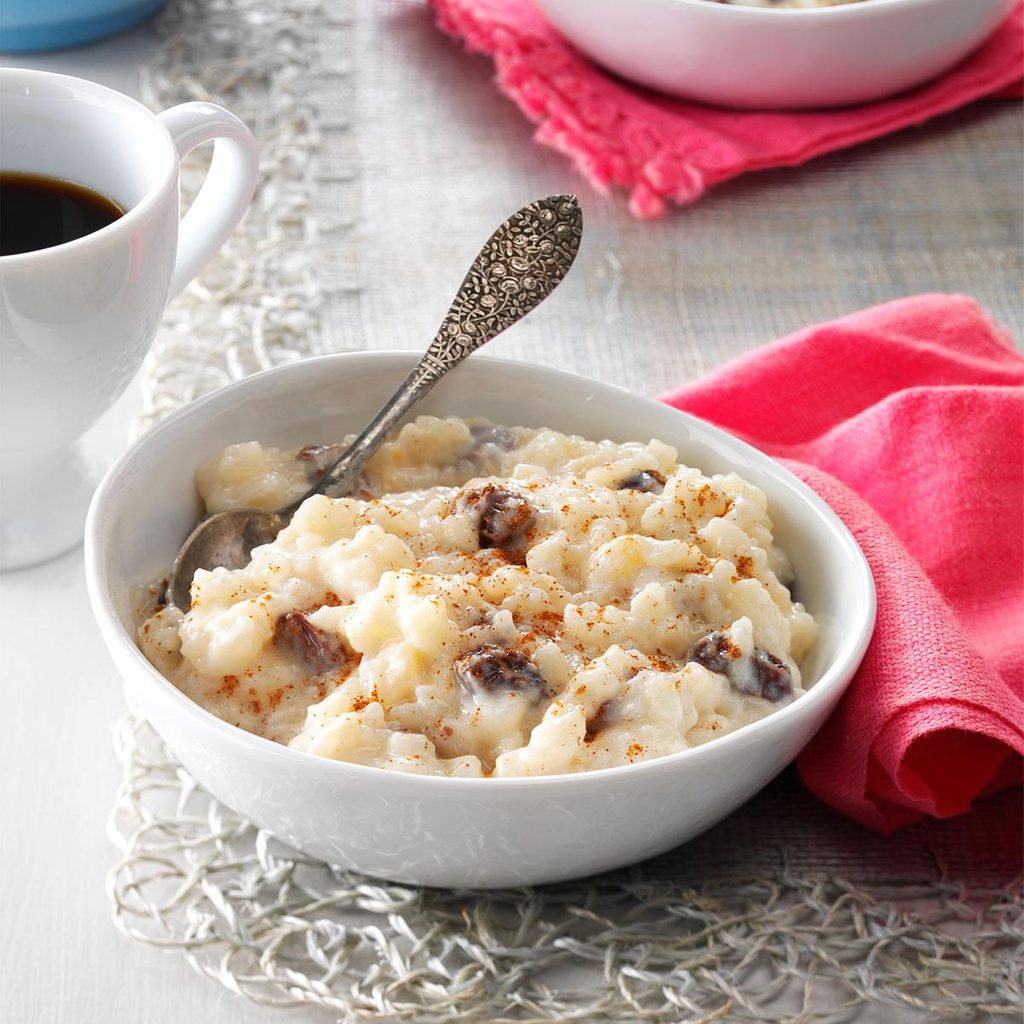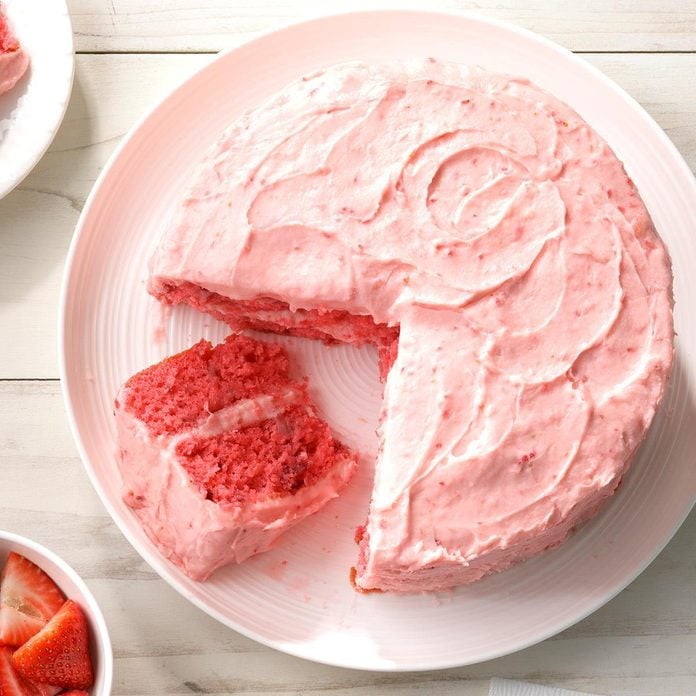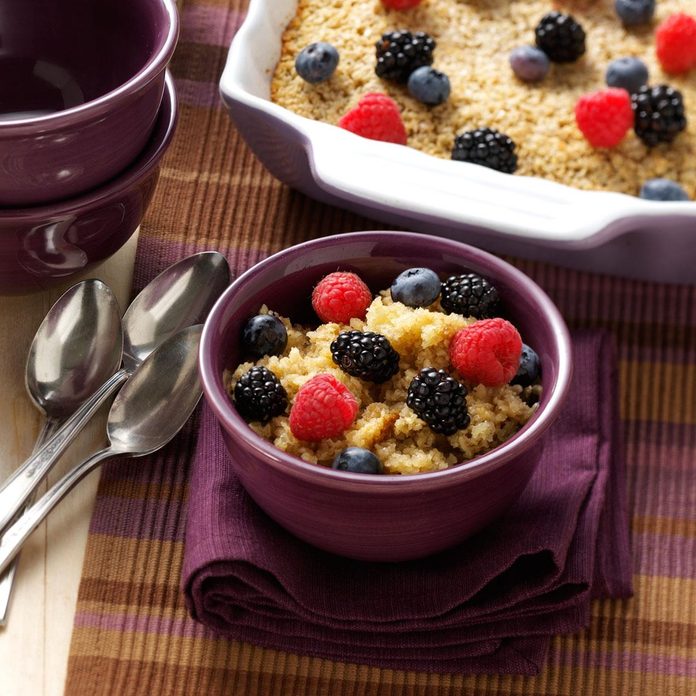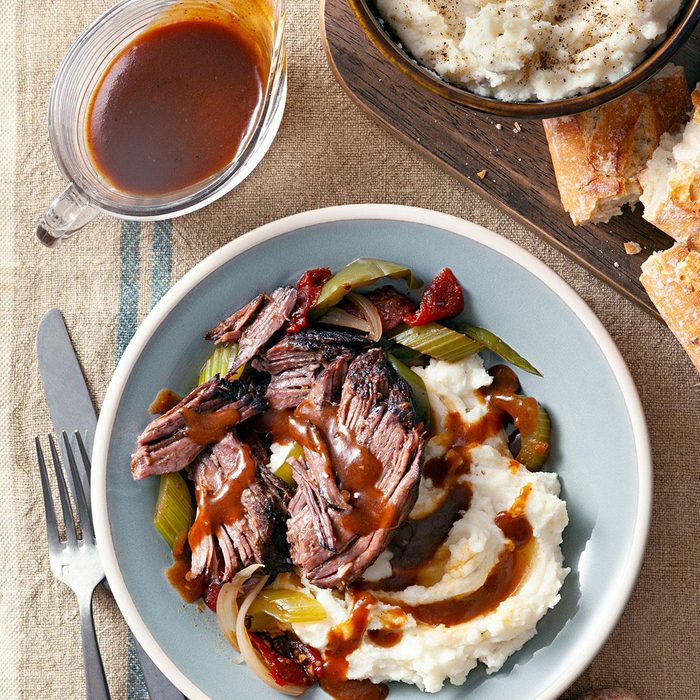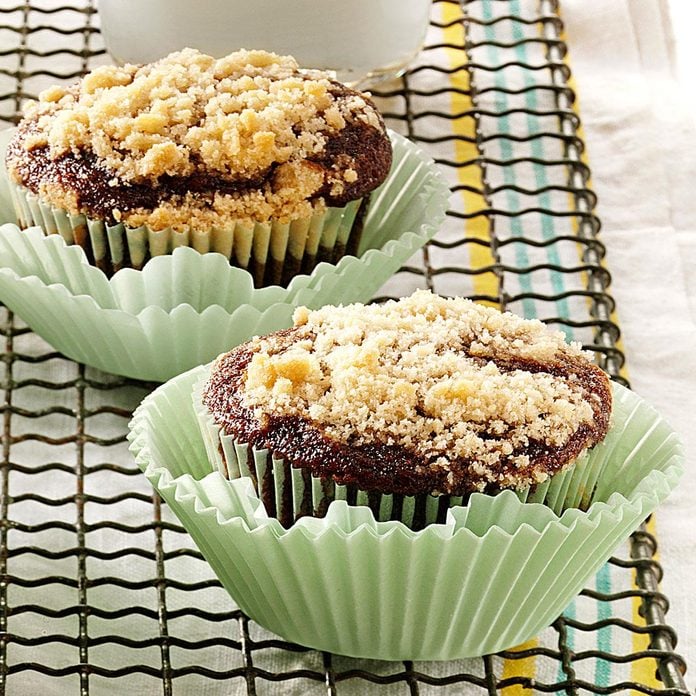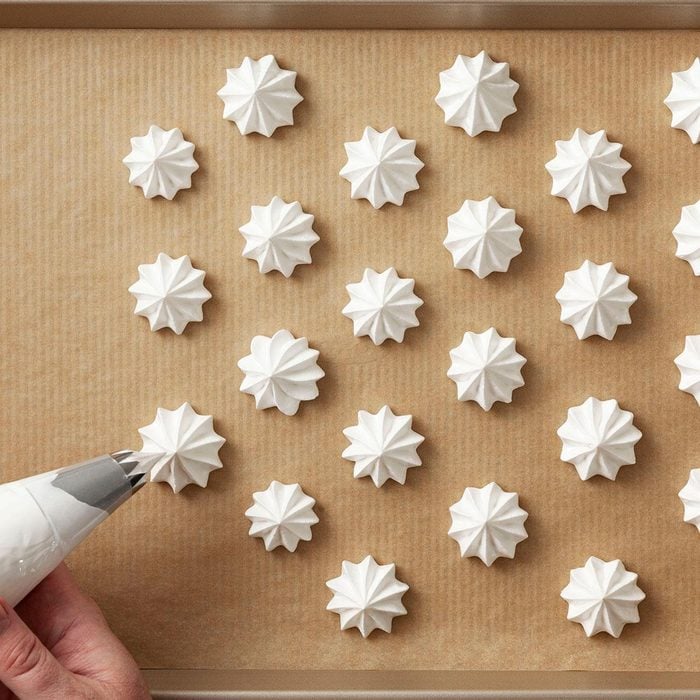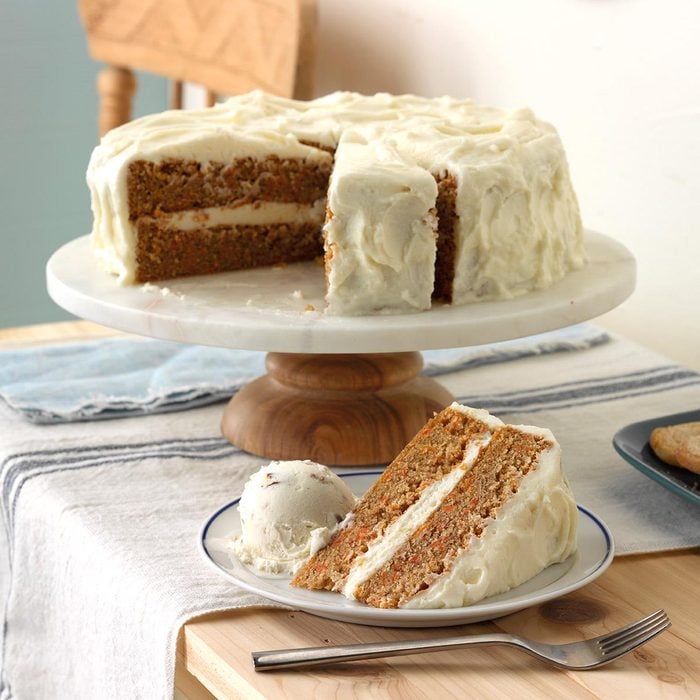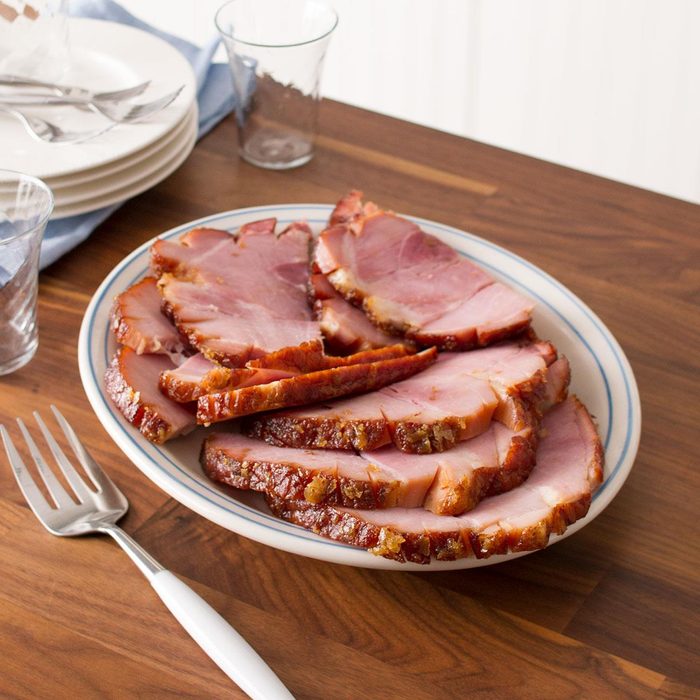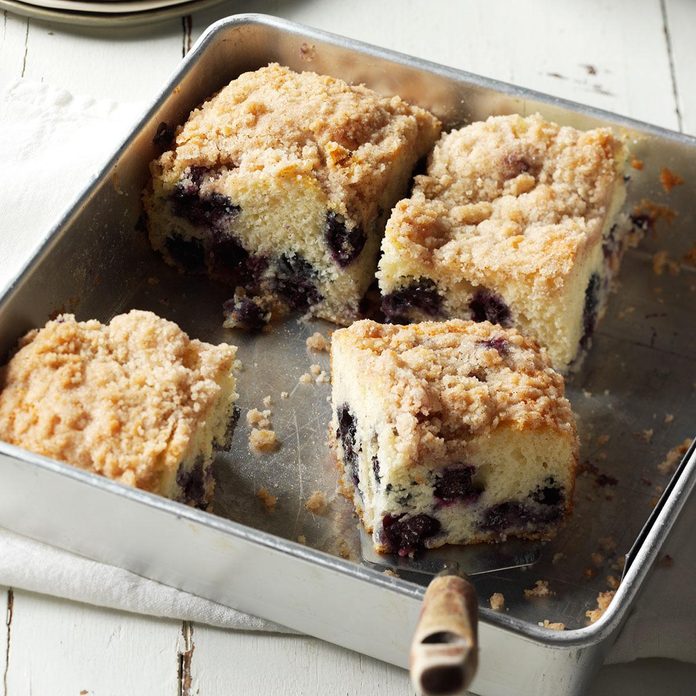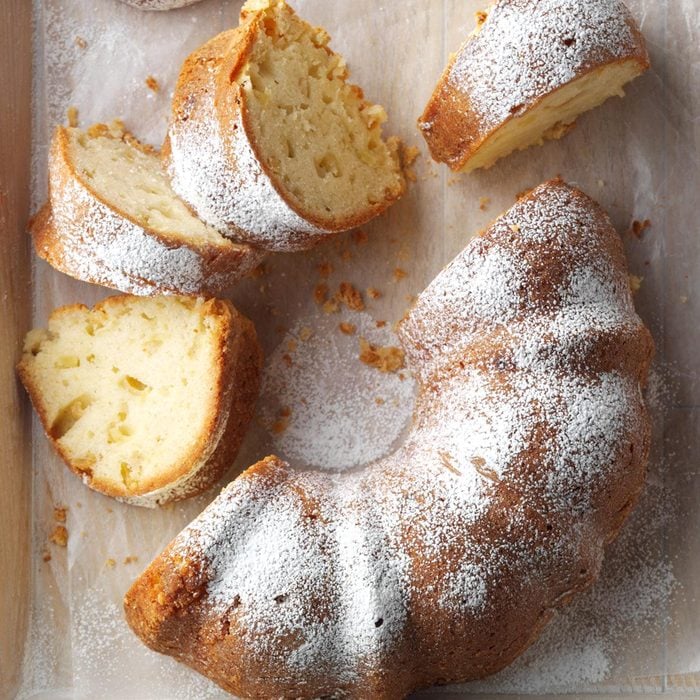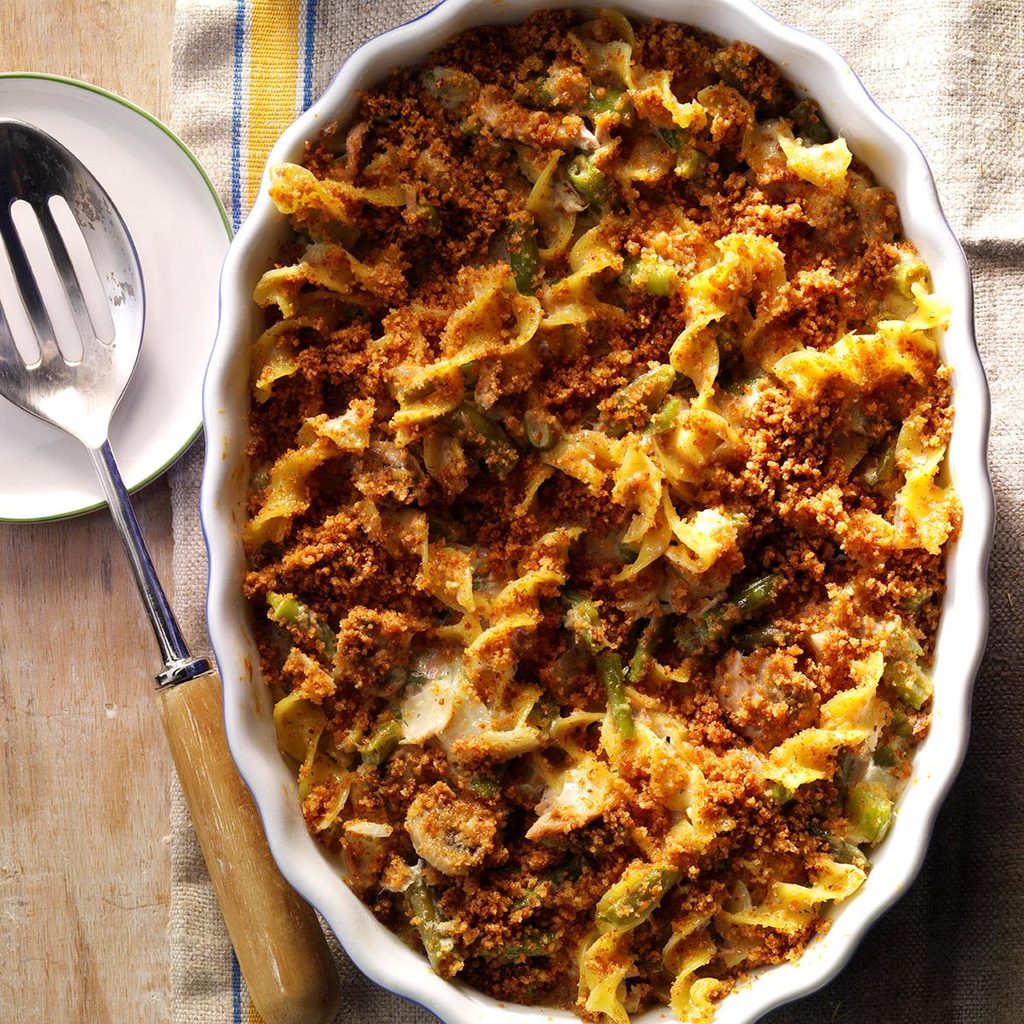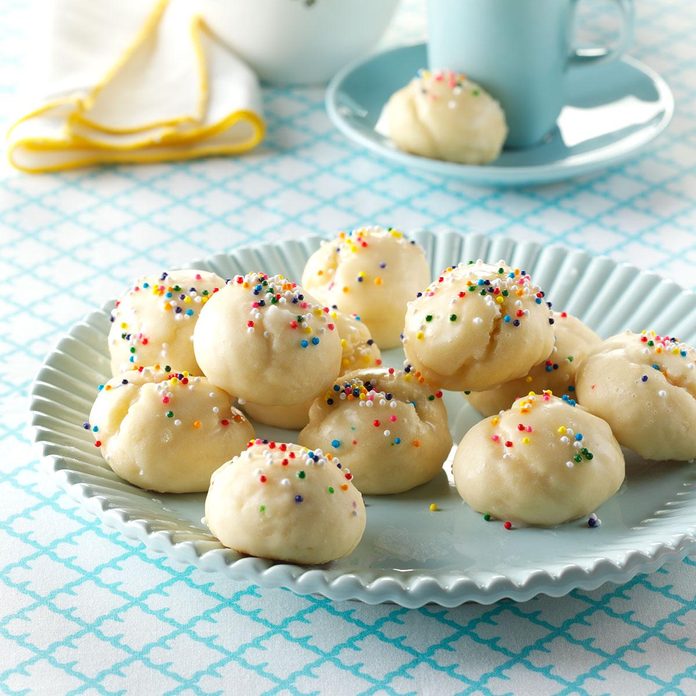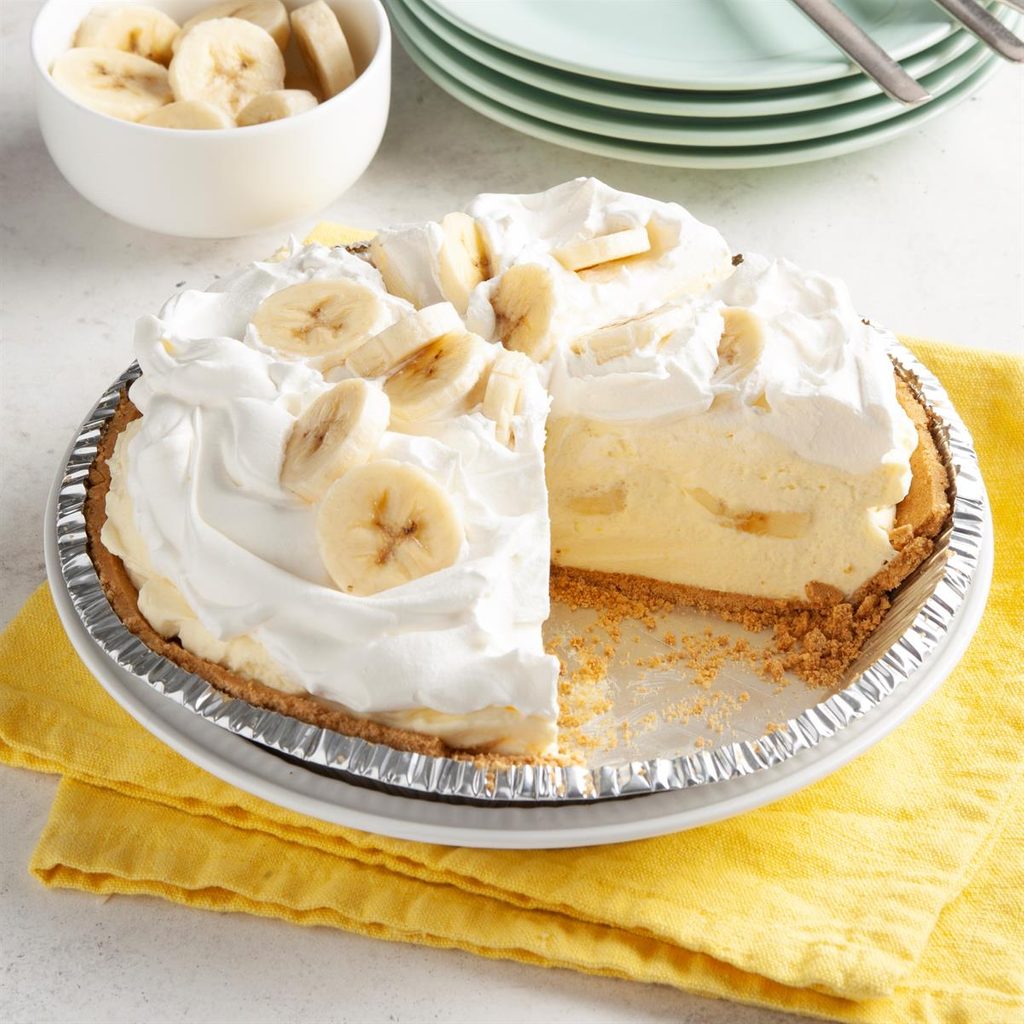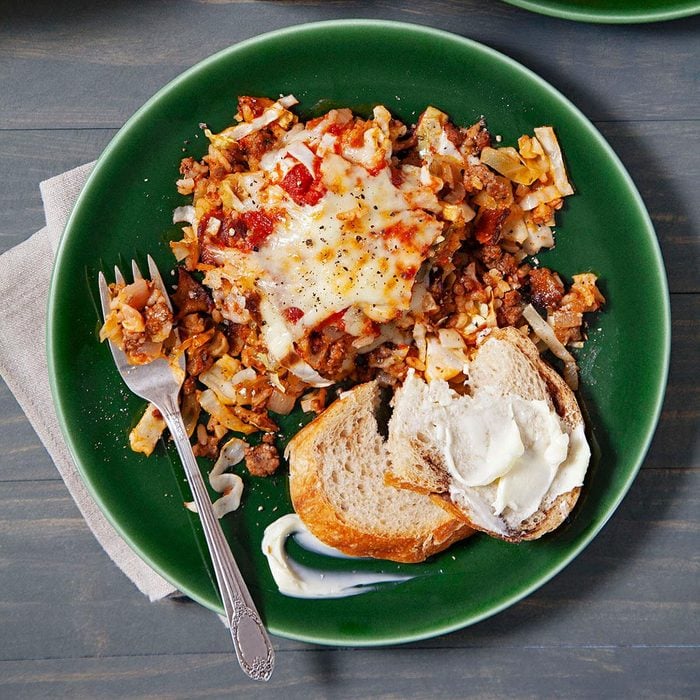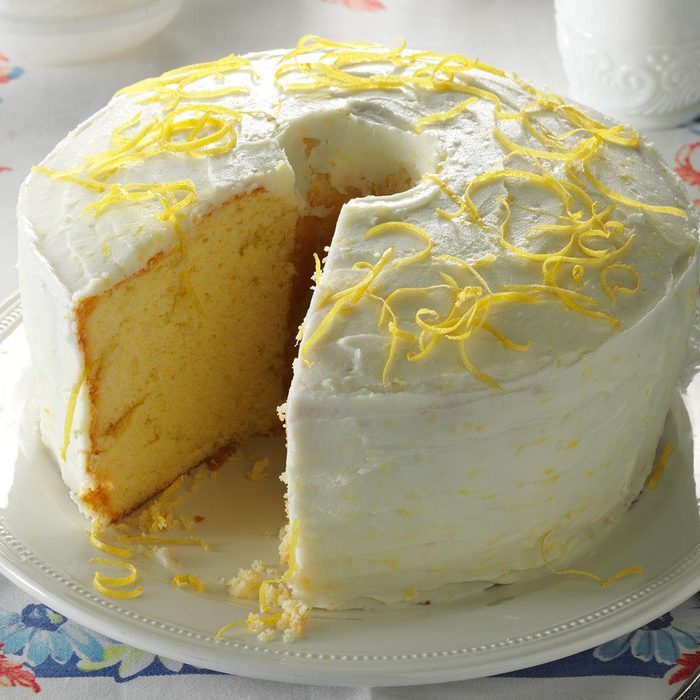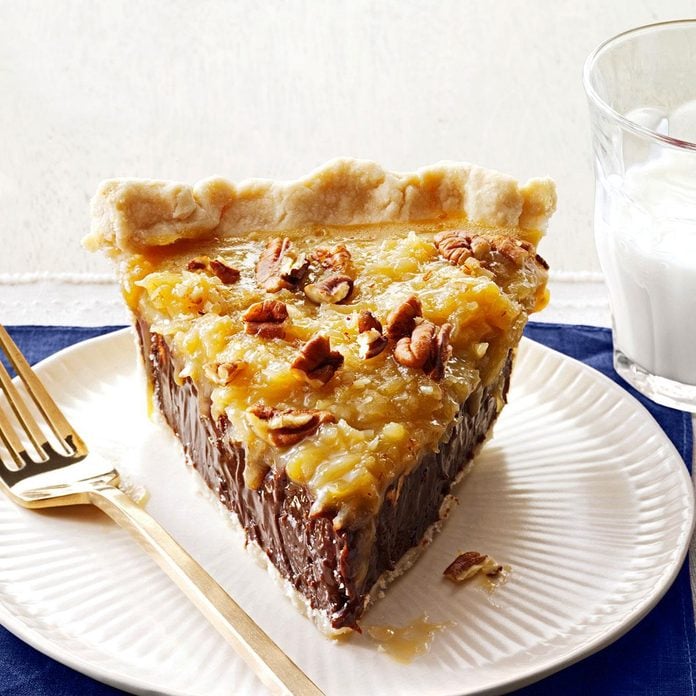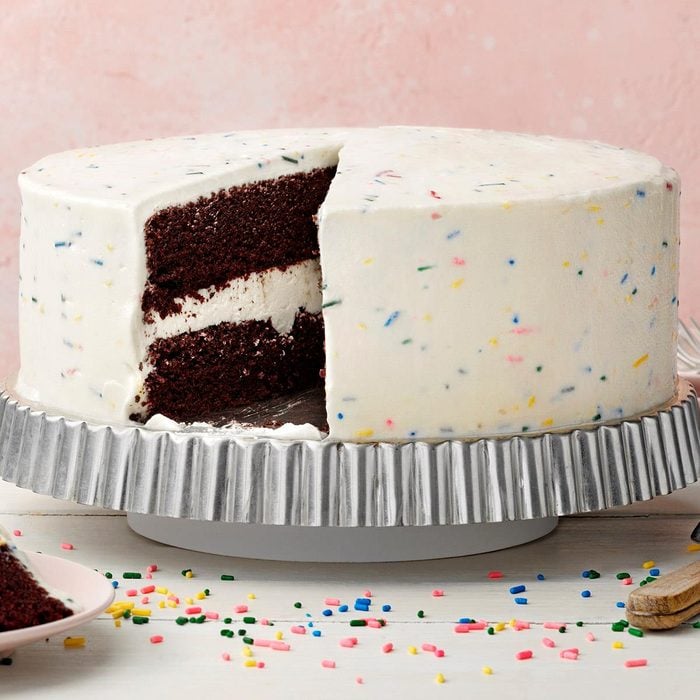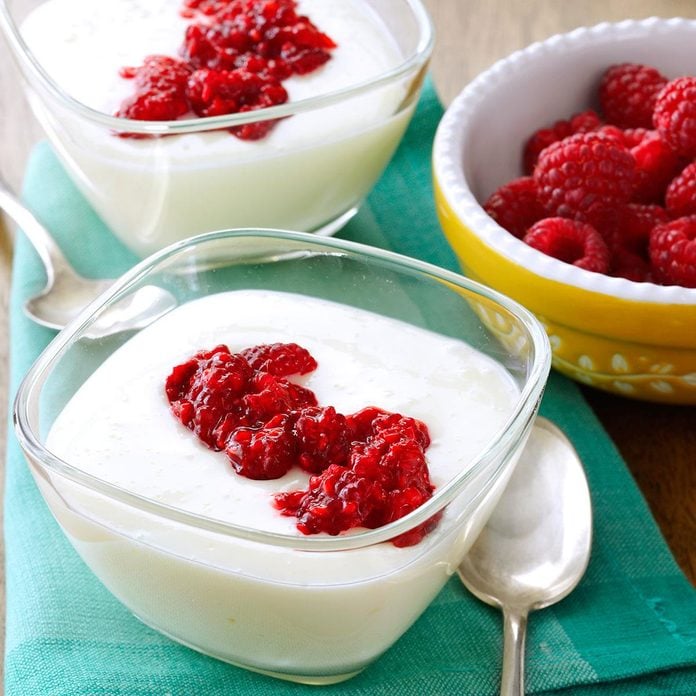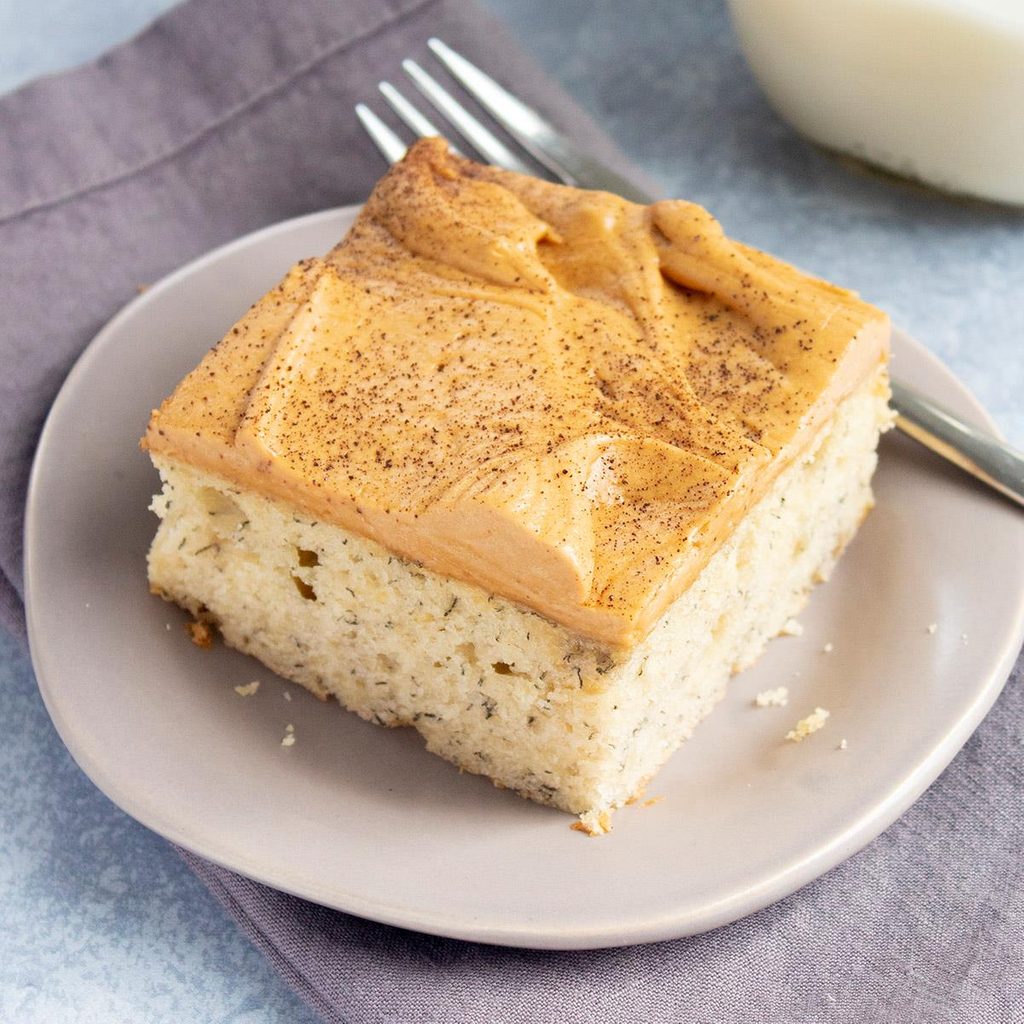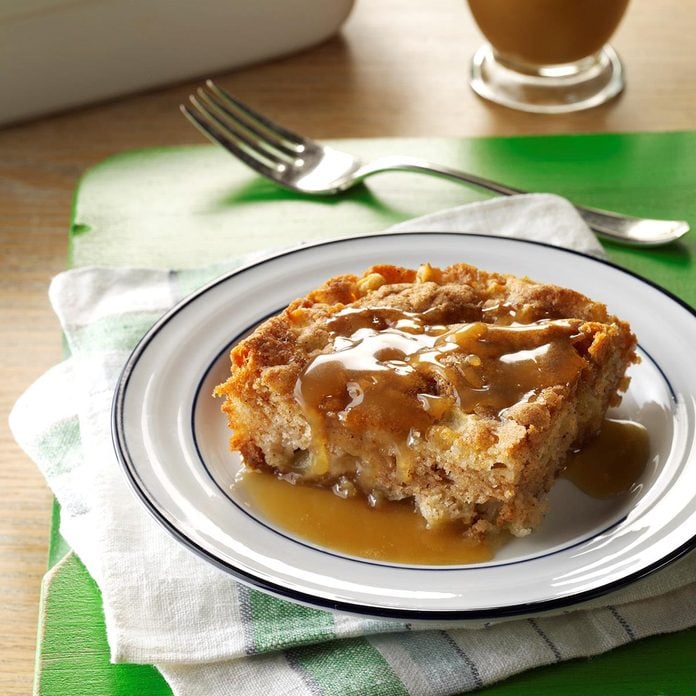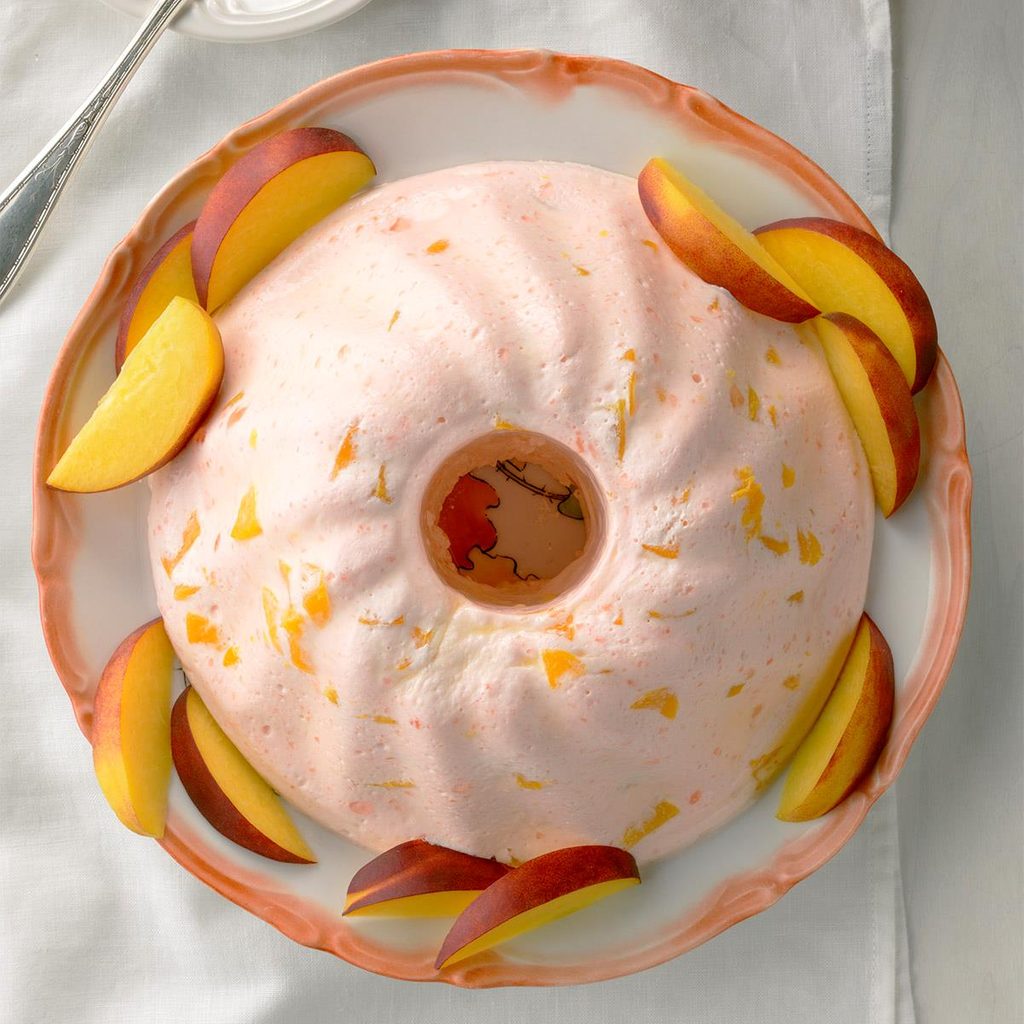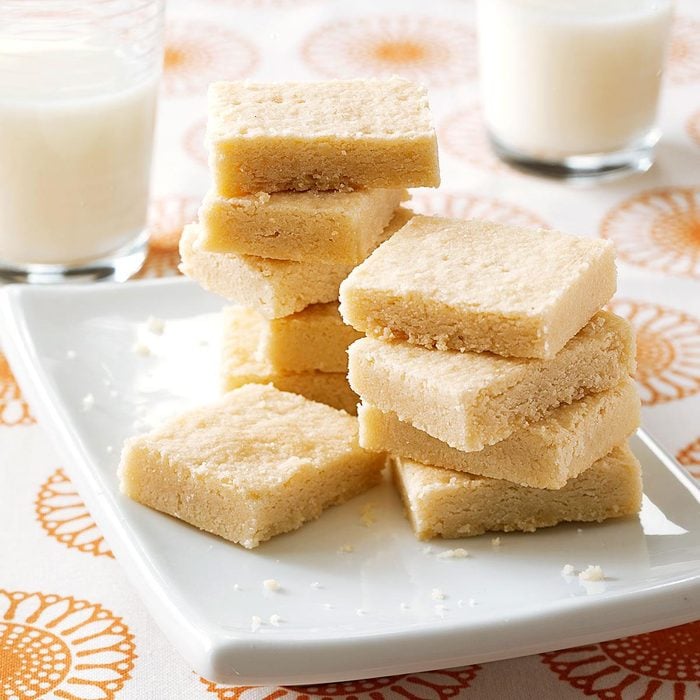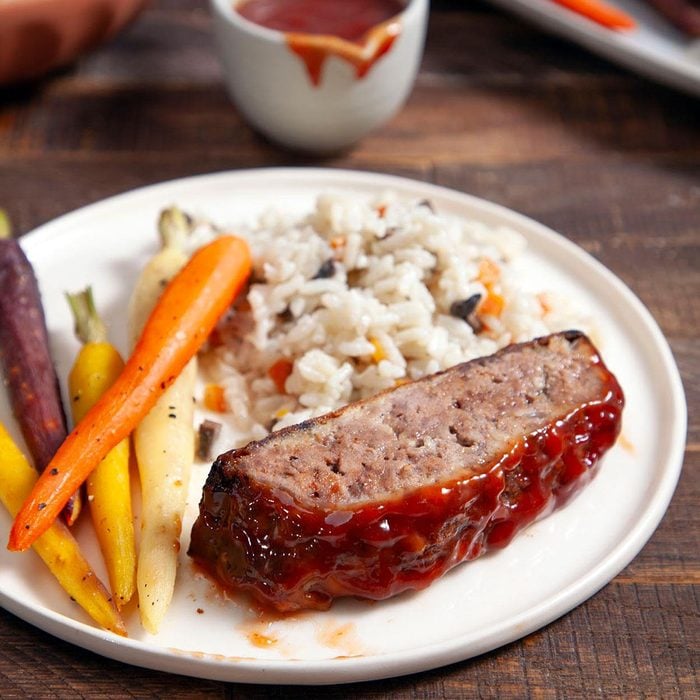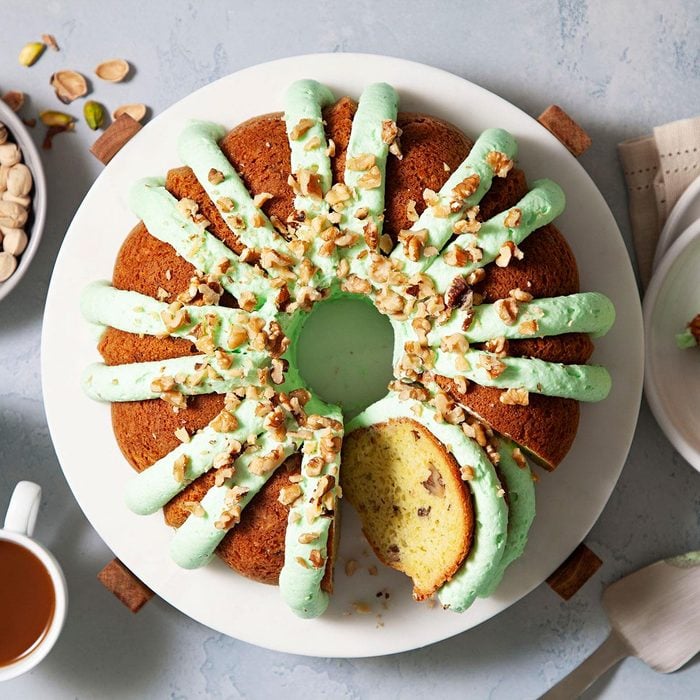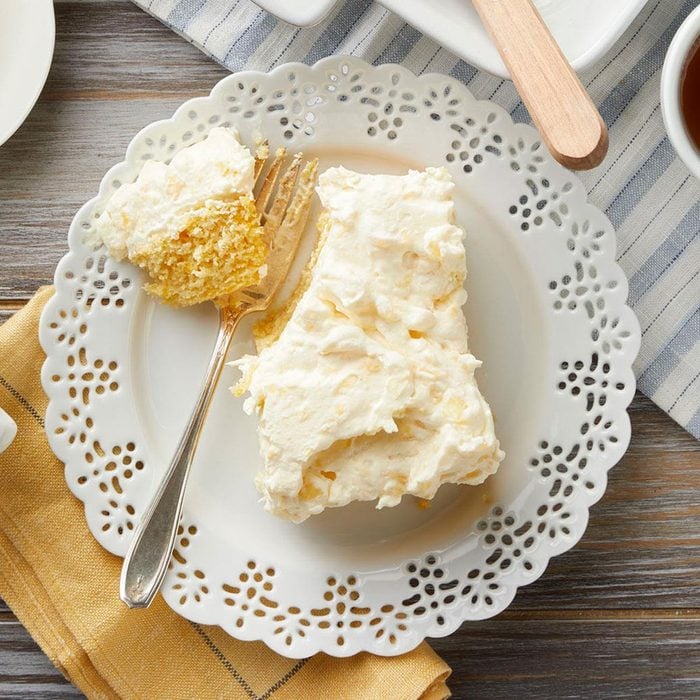Who doesn’t love a good, old-fashioned pound cake? Moist and buttery, it’s a simple dessert that never goes out of style. But have you ever wondered where pound cake got its name?
A Brief History of Pound Cake
Word has it that the pound cake originated in Northern Europe in the early 1700s. Baked in a loaf pan, the original recipe called for a pound each of flour, butter, eggs and sugar, which resulted in an incredibly moist, dense cake.
Over the years, however, the basic recipe has been adapted more ways than one can count. Early European variations from the mid-1800s used cornmeal instead of all-purpose flour to make the treat more affordable. Today, modern adaptations have adjusted the ingredient ratios and added flavorings like lemon, chocolate and vanilla. Just take a look at all these pound cake recipes!
All of these changes have significantly altered the taste and texture of the original recipe and left us wondering: How does modern-day pound cake differ from the old-fashioned version? We decided to put the original recipe to the test.
How to Make Old-Fashioned Pound Cake
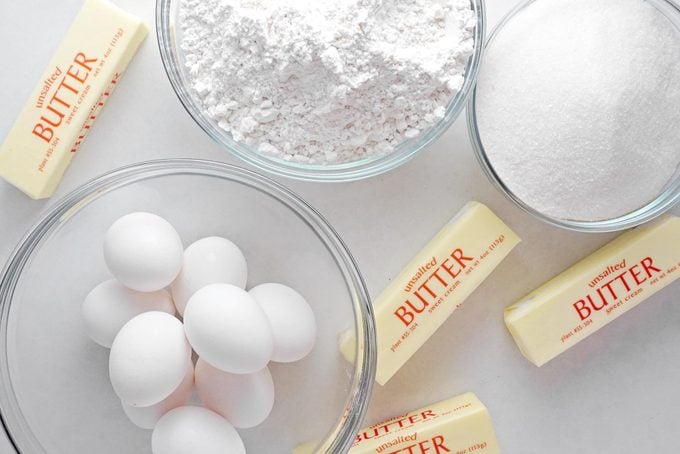 Lauren Habermehl for taste of Home
Lauren Habermehl for taste of Home
Ingredients
- 1 pound unsalted butter, softened
- 1 pound sugar
- 1 pound eggs (when weighed in their shells)
- 1 pound all-purpose or cake flour
See how this recipe compares to our Copycat Sara Lee Pound Cake and Million-Dollar Pound Cake.
Directions
Step 1: Weigh the ingredients
Using a kitchen scale, weigh out each ingredient into individual bowls and set aside. For the eggs, weigh them while they are still in their shells and leave them uncracked until you are ready to add them to the batter. If you don’t own a kitchen scale, there are lots of affordable options on Amazon or at your local kitchen supply store. These are our favorite kitchen scales.
Step 2: Cream the butter
In a stand mixer with the beater attachment, cream the softened butter until light and fluffy (about 5-6 minutes) at medium speed.
Step 3: Add the sugar
Next, with the mixer on low, gradually add the sugar in a steady stream. Once the sugar has been added, turn the mixer off and take a moment to scrape the sides of the mixing bowl to ensure even blending of the butter and sugar. Turn the mixer back on and continue to cream the butter and sugar together for an additional 3-4 minutes.
Step 4: Mix in eggs
Once the sugar and butter are well blended, begin adding the eggs. Crack each egg, one at a time, and add it to the batter. Take care to mix each egg until no traces of yolk remain before adding the next egg. After every two or three eggs, pause the mixer and scrape down the sides of the mixing bowl.
Step 5: Fold in the flour
Reduce the mixer to the lowest speed and add 1/4 of the flour. Mix on low until no dry flour remains and then repeat three more times until all of the flour has been incorporated. Mix until you have a smooth batter, then turn off the mixer.
Step 6: Bake!
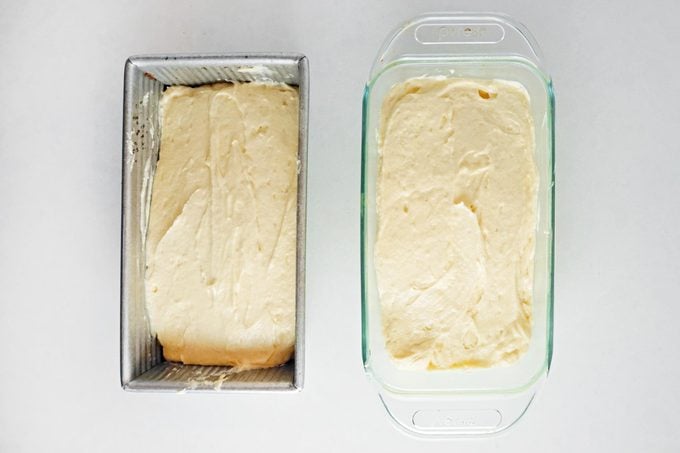 Lauren Habermehl for taste of Home
Lauren Habermehl for taste of Home
Divide the batter evenly into two buttered 8.5 x 4.5-inch loaf pans. Smooth the top of each loaf flat with an offset spatula. Place the prepared loaf pans into a preheated 325°F oven, preferably with the racks positioned in the lower third of the oven.
Bake for 60 minutes and then check the doneness of each loaf. The loaves should be golden with a small crack down the center of their domed top and feel firm to the touch when pressed gently. A toothpick should also come out clean when inserted into the loaf.
Editor’s Tip: You can also insert an instant-read thermometer into the center of each loaf. If the thermometer reads 200°, they’re done baking.
Step 7: Let cool, then serve
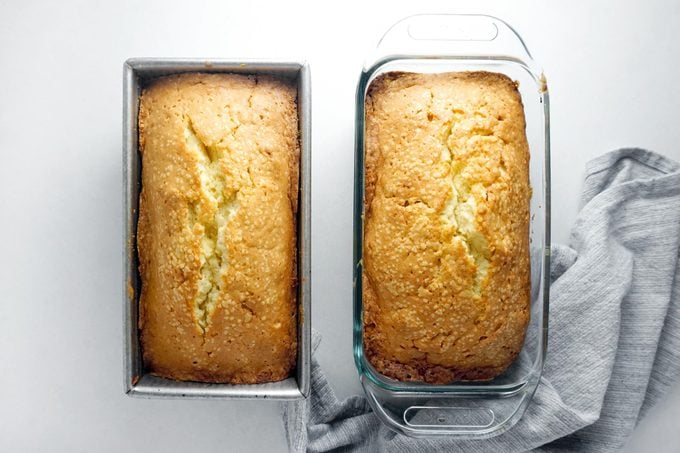 Lauren Habermehl for taste of Home
Lauren Habermehl for taste of Home
Remove the loaves from the oven and let cool for 10-15 minutes on a wire cooling rack. After 15 minutes, carefully remove the cakes from their pans and let cool completely before serving.
To serve the pound cake, slice and top with fresh fruit and whipped cream. Or, cut it into cubes and layer it into a tasty trifle.
The Results
While this recipe gets a 10 out of 10 in both appearance and texture, we felt that the flavor was definitely lacking something. Our detailed thoughts are broken down below:
- Appearance: This pound cake recipe couldn’t have turned out better. Both cakes had a deep golden color and even, domed top. They also came out with that iconic crack down the middle.
- Texture: When sliced, the loaves were baked evenly and had a tight, dense crumb structure. And a few bites proved that the cake was moist, spongy and light.
- Flavor: This original recipe does lose some points in the flavor category. The cake has a lovely, slightly sweet flavor from the sugar, but overall the taste of the flour comes through a bit too strong. If made again, we would add a little flavoring to the batter after mixing the eggs. We recommend 1-2 tablespoons of vanilla, but a little almond, orange or lemon extract would also be tasty.
Overall, this old-fashioned recipe gets a 9/10 from us. It’s simple and straightforward, and it yields a beautiful result. This is a recipe we will surely make again—just with a few tweaks.
Tips for Making Old-Fashioned Pound Cake
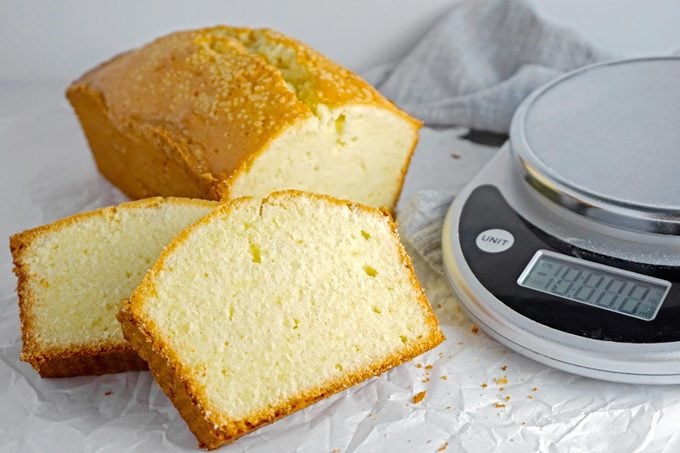 Lauren Habermehl for taste of Home
Lauren Habermehl for taste of Home
What is the best flour for pound cake?
We tested this recipe with all-purpose flour, and it works well. You may substitute cake flour, which has a lower protein content than AP flour, resulting in a lighter, more tender cake. (Here’s a deeper look at different types of flour.)
You should not use self-rising flour in this recipe. Self-rising flour contains chemical leavening agents, which will make pound cake rise too much, altering the intended texture of the cake and possibly even overflowing your baking pan!
Can I make this pound cake gluten-free?
Pound cake’s dense texture usually adapts to gluten-free very well. You may replace the flour with an all-purpose gluten-free flour mix. Thanks to the volume of the batter, you’ll want a mix that contains xanthan gum or guar gum, binding agents that will make the large cake sturdier.
Again, be sure that your mix doesn’t contain any rising agents—most GF flour mixes do not.
Should all my ingredients be room temperature?
Yes! Butter should be softened to cream properly (here’s how to soften butter quickly). Eggs should be room temperature when they’re beaten in. Cold eggs can make the batter curdle, which will make it heavier and less tender after baking. To bring them up to room temperature quickly, place uncracked eggs in a bowl of hot water for a few moments.
How do I prevent my cake from turning out too hard?
An old-fashioned pound cake is dense, with a tight crumb that’s not unpleasantly claggy. Because the dough is so richly packed with eggs and butter, it’s naturally heavy—it doesn’t even contain any chemical leavening agents, like baking soda or powder, to lighten it. That means all of the lift in the cake comes from creaming the butter with the eggs. Make sure to follow the recipe exactly, beating each egg in thoroughly and scraping the bowl periodically. With such a large quantity of batter, even mixing is crucial.
That said, when adding flour (step 5), be sure to use a light hand to stir it in. Overbeating the batter once the flour is added may overactivate the gluten in the flour, resulting in a tougher cake.
Finally, using a lighter colored loaf pan will help keep the cake from darkening too quickly. Our recipe also calls for baking at a lower temperature for longer; use an oven thermometer to make sure your oven doesn’t run hot. As the baking time nears its end, check the cake every few minutes to ensure you don’t overbake it. As soon as it’s done, remove it from the oven.
How do I keep pound cake moist?
A well-baked pound cake will stay moist for four or five days, if stored properly. Keep pound cake at room temperature, wrapped in plastic wrap or covered in an airtight container to preserve moisture. Storing the cake in the fridge will dry it out.
Kelsey Rae Dimberg, former Taste of Home senior editor, contributed to this article.
Find More Vintage Recipes Worth Trying
Sugar Cream PieThis rich, custardy sugar cream pie is an Indiana specialty. With just one bite of this decadent dessert, you’ll see why!
French Onion SoupThis rich and comforting French onion soup recipe is surprisingly simple to make at home. And it rivals the soup you’ll find at any restaurant.
Amish Sugar CookiesThe Amish seem to be master bakers, and they did not skimp on Amish sugar cookies.
Chicken Broccoli CasseroleWhen you're looking for comfort and ease, this chicken broccoli casserole is the answer to your dinner dreams.
Grape SaladThis grape salad has it all: juicy grapes, creamy dressing, crunchy pecans and a sweet brown sugar topping. It’s kid-friendly and perfect for potlucks.
Easy Vanilla Buttercream FrostingAfter trying a few buttercream frosting recipes, this easy vanilla buttercream frosting takes the cake with its unmatchable homemade taste. With a few simple variations, you can come up with different colors and flavors. —Diana Wilson, Denver, Colorado
Chicken and DumplingsPerfect for fall nights, my simple version of comforting chicken and dumplings is speedy, low in fat and a delicious one-dish meal. —Nancy Tuck, Elk Falls, Kansas
Sour Cream Pound CakeA classic sour cream pound cake should be your go-to choice for brunch, snacking, special occasions and more.
Never-Fail Scalloped PotatoesThis rich, cheesy take on scalloped potatoes is deceptively simple to make. It comes together in just 25 minutes and then you have an hour to relax (or make the rest of the meal) while it bakes.
Butter Pecan FudgeToasted pecans add a nutty crunch to this creamy fudge, perfect for holiday giving. People always seem to rave about its wonderful caramel flavor. —Pam Smith, Alta Loma, California
Lemon Icebox PieOur chilled, no-bake lemon icebox pie is the perfect indulgence on a hot summer's day.
Strawberry Pretzel SaladNeed to bring a dish to pass this weekend? This make-ahead strawberry pretzel salad will disappear quickly at any potluck. —Aldene Belch, Flint, Michigan
Potato SaladThis homemade potato salad recipe doesn't have many ingredients, so it isn't as colorful as many that you find nowadays. But Mama made it the way her mother did, and that's the way I still make it today. Try it and see if it isn't one of the best-tasting potato salads you have ever eaten! —Sandra Anderson, New York, New York
Classic Chocolate CakeIf you need to learn how to make chocolate cake from scratch, this easy homemade chocolate cake recipe is a perfect place to start. It appeared on a can of Hershey's cocoa way back in 1943. I tried it, my boys liked it, and I've been making it ever since. —Betty Follas, Morgan Hill, California
Old-Fashioned GingersnapsI discovered this recipe many years ago, and it's been a favorite among our family and friends ever since. Gingersnaps are timeless—a classic holiday cookie that's welcome year-round. —Francis Stoops, Stoneboro, Pennsylvania
Chicken Noodle CasseroleEveryone who tries this comforting cheesy chicken casserole asks for the recipe. It's so simple to make that sometimes I feel as if I'm cheating! —Kay Pederson, Yellville, Arkansas
Old-Fashioned Rice PuddingThis comforting dessert is a wonderful way to end any meal. As a girl, I always waited eagerly for the first heavenly bite. Today, my husband likes to top his with a scoop of ice cream. —Sandra Melnychenko, Grandview, Manitoba
Mamaw Emily’s Strawberry CakeMy husband loved his mamaw's strawberry cake recipe. He thought no one could duplicate it. I made it, and it’s just as scrumptious as he remembers. —Jennifer Bruce, Manitou, Kentucky
Amish Baked OatmealThe first time I had this treat was at a bed-and-breakfast in Lancaster, Pennsylvania. To me, it tasted just like a big warm-from-the-oven oatmeal cookie! —Colleen Butler, Inwood, West Virginia
Slow-Cooker Chuck RoastPacked with tender beef and vegetables and served in a rich gravy, this slow-cooker chuck roast is a hearty, delicious dinner any night of the week.
Banana PuddingThis banana pudding layered with vanilla wafers tastes just like Grandma's: creamy, simple, comforting and filled with sweet banana flavor.
Shoofly CupcakesThese were my grandmother's specialty. To keep them from disappearing too quickly, she used to store them out of sight. —Beth Adams, Jacksonville, Florida
Meringue CookiesThese sweet little swirls are light as can be. They're all you need after a big, special dinner. —Jenni Sharp, Milwaukee, Wisconsin
Hearty Vegetable SoupA friend gave me the idea to use V8 juice in vegetable soup because it provides more flavor. My best vegetable soup recipe is perfect to prepare on a crisp autumn afternoon. —Janice Steinmetz, Somers, Connecticut
Carrot Cake with Cream Cheese FrostingCinnamon, nutmeg, carrots and a creamy, tangy frosting make this classic carrot cake a winner.
Peanut Butter CookiesWe cream shortening instead of butter for this dough, resulting in an ultra-rich-tasting version of traditional peanut butter cookies. Also nice? They take less than 30 minutes to prepare.
How to Cook a HamWhip up a gorgeous holiday centerpiece with this easy glazed ham recipe. Our Test Kitchen experts share their best tips and tricks for how to cook a ham for special occasions.
Aunt Marion’s Fruit Salad DessertMake this fruit salad with vanilla pudding for an easy picnic dessert. Featuring a mix of fresh fruits and a creamy vanilla pudding sauce, it’s a versatile dish that's simple to prepare and sure to impress.
Down East Blueberry BuckleThis buckle won a contest at my daughter’s college. The prize was four lobsters, but the real reward was the smile on our daughter’s face. —Dianne van der Veen, Plymouth, Massachusetts
Aunt Lou's Fresh Apple CakeMy Great-Aunt Lou made a luscious fresh apple cake recipe that became a family tradition. My mom makes it for our annual beach trip to the Outer Banks. —Cristy King, Scott Depot, West Virginia
Tuna Mushroom CasseroleI love to serve this dressed-up version of a tuna casserole. The green beans add nice texture, color and flavor. The first time I made this dish, my uncle asked for seconds even though tuna casseroles are not usually his favorite.
—Jone Furlong, Santa Rosa, California
Italian Wedding CookiesYou don't need a party to enjoy these Italian wedding cookies. The soft, lemon-scented, cakelike cookies with a sweet glaze and pretty sprinkles make any day brighter.
Old-Fashioned Banana Cream PieThis old-fashioned banana cream pie recipe is full of flavor. Because it uses instant pudding, the no-bake dessert is ready in just minutes. —Perlene Hoekema, Lynden, Washington
Amish Breakfast CasseroleWe enjoyed hearty breakfast casseroles during a visit to an Amish inn. When I asked for a recipe, one of the women told me the ingredients right off the top of her head. I modified it a bit to create this version that my family loves. —Beth Notaro, Kokomo, Indiana
Hot Fudge CakeThis hot fudge cake is so decadent, rich and chocolatey that you may want to serve it with a tall glass of milk and a stack of napkins. Honestly, aren’t those always the best desserts?
Cabbage Roll CasseroleI layer cabbage with tomato sauce and ground beef lasagna-style to create a hearty casserole that tastes like cabbage rolls but without all the work. —Doreen Martin, Kitimat, British Columbia
Lemon Chiffon CakeLemon chiffon cake is soft and spongy, with a fresh lemon flavor in the cake and the luscious buttercream frosting. Plan to eat this cake quickly, as chiffon cakes don't last very long. But that shouldn't be a problem, given how delicious this cake is.
Coconut-Pecan German Chocolate PieThis German chocolate pecan pie combines the ingredients everyone loves in its classic cake cousin. It's so silky and smooth, you won't be able to put your fork down. —Anna Jones, Coppell, Texas
Moist Chocolate CakeThis moist chocolate cake recipe with coffee reminds me of my grandmother because it was one of her specialties. I bake it often for family parties, and it always brings back fond memories. The cake is light and airy with a delicious chocolate taste. This recipe is a keeper! —Patricia Kreitz, Richland, Pennsylvania
Swedish CremeSwedish cream is similar to panna cotta, because it is set with gelatin, but the tender dessert includes sour cream for subtle tanginess.
Potluck Banana CakeI found this recipe more than five years ago and have been making it for family gatherings ever since. The coffee-flavored frosting complements the moist banana cake. —Kathy Hoffman, Topton, Pennsylvania
Chunky Apple CakeAfter taste testing lots of apple cakes, I've found this apple cake recipe the best. Full of old-world comfort, the yummy brown sugar sauce really makes the cake special. For a festive occasion, top with a dollop of whipped cream. —Debi Benson, Bakersfield, California
Peach BavarianFruit molds are my specialty. This one, with its refreshing peach taste, makes a colorful salad or dessert. —Adeline Piscitelli, Sayreville, New Jersey
Scottish Shortbread CookiesThis simple three-ingredient shortbread cookie recipe makes wonderfully rich, tender cookies. Serve them with fresh berries of the season for a nice, light dessert. You'll get miles of smiles when friends see these at an afternoon tea or a bridal shower. —Marlene Hellickson, Big Bear City, California
Meat LoafThis traditional meat loaf recipe creates a tender, juicy meat loaf topped with a caramelized glaze. The best part: It’s so easy to make, and it’s ready to eat in about an hour!
Pistachio Pudding CakeEveryone who's ever tried this moist, one-of-a-kind pistachio pudding cake can't believe it uses a mix. The dessert is perfect for St. Patrick's Day—and you won't need the luck of the Irish to whip it up! —Suzanne Winkhart, Bolivar, Ohio
Pig Pickin' CakeA pig pickin’ cake is a southern delight that tastes like sunshine in every bite.
